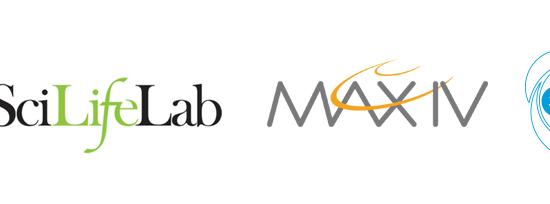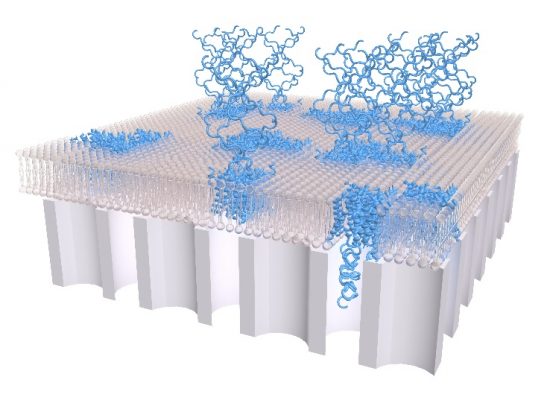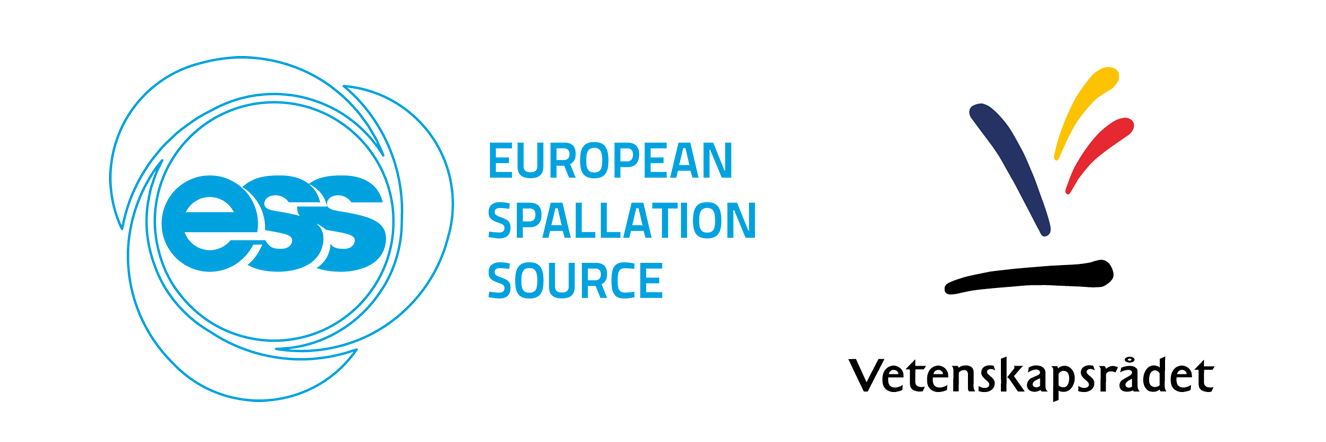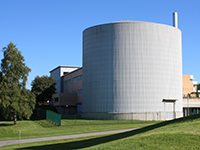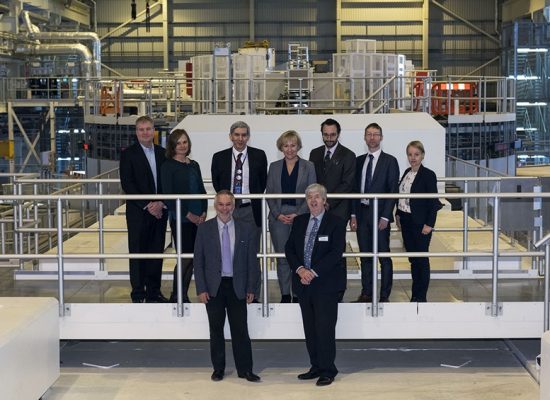As part of the Scientific Member agreement between Sweden and the Institut Laue Langevin (ILL) for the period 2024 – 2029, 4 four-year PhD projects are available to be filled as soon as possible. These projects are intended to strengthen the Swedish neutron scattering community in all regions and across a range of scientific areas […]
News
Swedish Neutron Week 2024 to be held in May
We are pleased to announce that the Swedish Neutron Week 2024 will be organized in Lund, with Lund University and ESS as local organizers. The conference will be held at Stadshallen 29th – 31st May 2024. The event is jointly arranged by SNSS, SwedNess, ESS and Lund University, and is open to everyone who is, or wish to be, part of the Swedish neutron scattering […]
Swedish Neutron Week 2024 – save the date
29 – 31 May 2024, Lund We are happy to anounce that the Swedish Neutron Week in 2024 will take place in Lund between 29-31 May from lunch-to-lunch. In the afternoon of the 31st, a visit of the ESS site is planned to enable the community some first-hand impressions about the progress at the facility. On the Monday and […]
ESS – in-kind projects
The purpose of the projects funded by the Research council is to enable Swedish researchers to contribute to the build-up of the European Spallation Source (ESS) and for Swedish competence within areas such as instrumentation to be built up and new collaborations developed. In-kind collaborations provide a close link to ESS, one of the world’s […]
Webinar Registration: Structure Generation for MD Simulations of Soft Matter Systems
It is our great pleasure to invite you to an online launch event and workshop to showcase two new software workflows which will be of interest to the Small-angle Scattering and Disordered Materials communities. The development of these tools has been funded by the Ada Lovelace Centre and they are intended to offer users new […]
Swedish in-kind to ESS
The Swedish neutron community have long been asking for a way of contributing in-kind to ESS, and now it is possible. This way, Sweden can build competence in instrumentation and new collaborations develop. In-kind collaborations can give a close connection to the ESS instrument projects and opportunities to be involved in first science at ESS.
Coupling lipid nanoparticle structure and automated single particle composition analysis to design phospholipase responsive nanocarriers
Lipid nanoparticles (LNPs) are currently under intense scrutiny for vaccine delivery and RNA therapies. Key to their successful optimisation and translation is a nanoscale, single particle characterisation of the relationship between LNP structure, composition, and performance. Maximising performance and understanding intracellular trafficking are key components of LNP rational design. Phospholipases, specific lipid modifying enzymes, are […]
Neutron reflection and deuteration reveal new insights about the interaction of DHODH enzymes with ubiquinone in mitochondrial model membranes
DHODH (dihydroorotate dehydrogenase) catalyzes a key step in the biosynthesis of pyrimidines, precursors of nucleic acids needed for DNA and RNA synthesis in all living organisms. Because of this, DHODH is a drug target for the inhibition of inflammation and investigated as a target to inhibit cell proliferation (cancer) and viral replication. Human DHODH is […]
Chiral spin liquid ground state in YBaCo3FeO7 observed by polarised diffuse neutron scattering
Spin liquids are a topical and fascinating subject of condensed matter physics, fueled by the hope to create novel ground-states of matter. Typically, the combination of antiferromagnetic interactions with strong frustration leads to a rich variety of highly correlated spin states rather than to conventional order. Experimental research, however, has remained inconclusive in respect to […]
New study indicates limited water circulation late in the history of Mars
Nakhlite meteorites are igneous rocks from Mars that reacted with water ~630 million years ago while still part of the Martian bedrock, during a time that is often suggested to have been a “dry” period on Mars. However, magmatism and meteorite impacts can trigger so called hydrothermal systems with warm fluids circulating in the bedrock, […]
Correlations between Precipitation Reactions and Electrochemical Performance of Lithium–Sulfur Batteries Studied by Operando Scattering Techniques
Li-S batteries are promoted as a highly promising energy storage solution, but the specific energy demonstrated so far (~400 W h kg‑1) is restricted by the low utilization of active materials in both lithium and sulfur electrodes. The incomplete discharge process of the sulfur electrode is associated with precipitation of insulating reaction products from polysulfide intermediates. This process, […]
Probing the solution structure of the pentameric ligand-gated ion channel GLIC by small-angle neutron scattering
Membrane proteins mediate communication between the outside and inside of cells, and are common drug targets. Detailed understanding of the structure and function of these proteins enrich our basic understanding of how biology works at a molecular level, and can in the long run inform drug development. We have focused on the pentameric ligand-gated ion […]
SARS-CoV-2 spike protein removes lipids from model membranes and interferes with the capacity of high-density lipoprotein to exchange lipids
The COVID 19 pandemic had worldwide impact in 2020 and continues to do so to this day. Understanding how the SARS-CoV-2 virus interacts with the body and why it has greater impact on some areas of the population than others is of great importance. Early on, studies found the need for the presence of cholesterol […]
GISANS studies using fan shaped beams
The understanding of interfacial properties of materials as well as interfacial processes in terms of structural, morphological and compositional changes is of crucial importance in many scientific fields that include chemistry, physics, biology and engineering. Overall, surface science has advanced enormously over the last decades, which is related to the development of a series of […]
Design of Lipid-Based Nanocarriers via Cation Modulation of Ethanol-Interdigitated Lipid Membranes
The phase behavior of phospholipids dictates various membrane properties, such as permeability, shape, and stiffness. Some phospholipids exhibit a polymorphic gel phase and are capable of undergoing membrane interdigitation under specific conditions, such as in the presence of short-chain alcohols (e.g., ethanol). Ethanol-induced interdigitation of diacyl–phosphatidylcholine bilayers has been leveraged to formulate large unilamellar vesicles […]
Dual modality neutron and x-ray tomography for enhanced image analysis of the bone-implant interface
The quality of the bone tissue formed at the contact interface with a metallic implant is of utmost importance for the structural integrity of implant fixation. This quality can be assessed, e.g., based on its 3D microstructure, which is commonly visualised using x-ray tomography. However, due to large differences in interaction strength between the metal […]
Neutron diffraction for residual stress management in metal 3D printing by LPBF
In metal 3D powder bed printing, a part is built on a baseplate layer-by-layer through powder deposition and selectively melting of the deposited powder layer. The localized rapid heating and cooling cycles involved inevitably result in the development of residual stresses in the already solidified bulk of the part. The residual stresses can cause in-process […]
Emergent magnetic behavior in the frustrated Yb3Ga5O12 garnet
Emergence is the phenomenon of collective behaviour that cannot predicted from considerations of the individual constituents but rather through complex interactions resulting in novel and diverse states of matter. A well-known example is the benzene ring, a loop of six carbon atoms, that can be further interconnected to create carbon nanotubes. Emergent behaviour in magnetic […]
ILL PhD Studentships
A PhD project can be proposed by any academic researcher authorised to supervise PhD students and belonging to a university or affiliated institution in one of the ILL’s Associate or Scientific Member countries. If the PhD proposal is selected, the main proposer generally becomes the external academic PhD supervisor in whose university/institution the PhD student […]
Towards measuring surface dynamics with neutrons
Surface science has advanced enormously in recent decades, but many scientific questions are not resolved. Examples are spin wave dispersions with experiments contrasting theory or a difference in the potential defining the zero point energy of H adsorbed at Pt and Si surfaces. The surface dynamics of glass formers is under discussion as well as […]
GISANS revealed water influence on biobased thin films
Nanostructured porous thin films made from biocompatible cellulose nanofibrils (CNF) are widely used due to their attractive properties such as made from renewable resources, low density, lightweight, thermal stability, and excellent mechanical properties. These prerequisites make CNF a promising precursor for the design of bio composites and bio-inspired sensors. One crucial question is the relation […]
Polaris
The Polaris instrument at ISIS began operation as a high intensity, medium resolution powder diffractometer in the late 1980s. It quickly established a large and scientifically diverse research community, encompassing engineering, materials science, condensed matter physics, solid state chemistry and earth science. However, by the late 2000s many of the key components of the Polaris […]
Neutrons used to locate hydrogen in high entropy alloys
Lately the effect of global warming has been generally accepted and the interest of renewable resources is constantly increasing. Hydrogen would serve this purpose as an alternative fuel; however, storage is a challenging task and there is a need for new materials, with higher hydrogen capacity and lower cost. The concept of high-entropy alloys (HEAs) […]
Using inelastic neutron scattering to understand the local structure and vibrational dynamics in proton conducting oxides for sustainable energy technologies
Proton conducting oxides, and in particular acceptor doped BaZrO3, are materials of great interest because of their huge potential as electrolyte in several energy related technologies, such as hydrogen sensors, membrane reactors, steam electrolyzers, and intermediate-temperature (200 – 500 °C) solid oxide fuel cells. A key requirement for the electrolyte is a high proton conductivity […]
Interactions between Model Cell Membranes and the Neuroactive Drug Propofol
Many low molecular weight drugs, like classical surfactants, contain both hydrophobic and hydrophilic groups. However, due to their lower molecular weight and less distinct separation into hydrophobic and hydrophilic regions, the self-assembly of such drugs in aqueous solutions is less easy to describe in general terms. To gain more understanding of the interaction between such […]
How AstraZeneca can improve lipid nanoparticle formulations for gene delivery using neutron scattering
In recent year, new therapeutic modalities involving delivery of biological molecules such as RNA, peptides and oligonucleotides have shown promising results to treat diseases that are currently hard to tackle with standard small molecules approaches. As an example, last year Alnylam announced the first therapy using small interference RNA (siRNA) approved by the Federal Drug […]
Neutrons used to probe magnetism in three dimensional magnetic data storage elements
The transition from the current two-dimensional data storage and logic schemes to three-dimensional data structures could significantly improve the performance and capacity of electronic devices. Instead of simply storing and manipulating data in a two-dimensional array of elements, one can envisage stacking data bits on top of each other, thus greatly enhancing the data density. […]
Swelling of Thin Graphene Oxide Films Studied by in Situ Neutron Reflectivity
Multilayered Graphene Oxide (GO) materials such as membranes and thin films are known for their potential for selective ion permeation, nano-filtration, water desalination and gas barrier properties. Many recent studies have aimed at demonstration of selective permeation of certain ions and molecules through GO membranes. Membrane tests were demonstrated to be successful for relatively thin […]
Are you our new Webmaster?
The Swedish Neutron Scattering Society (SNSS) is searching for a webmaster/webdesigner. We are searching for a motivated student to further develop and keep the society’s webpage up to date. The student must be registered at one of the following universities: Chalmers Technical University Uppsala University KTH Linköping University Lund University Malmö University Besides further implementing […]
Travel grants for Master students available now!
We have now travel grants so that your Master students can travel and participate at neutron scattering experiments ! You find info on how to apply following by clicking here
Important information from ESS regarding the VR Grant for Accessibility to Infrastructure
The ESS is asking for draft proposals for The Swedish Research Council’s “Grant for Accessibility to Infrastructure” no later than August 10, along with draft letters of support.
The Swedish Research Council’s Grant for Accessibility to Infrastructure
The Swedish Research Council has been mandated by the Swedish Government to work towards ensuring Swedish researchers participate to a greater degree in the construction and development of research infrastructure, and towards making research infrastructure more accessible and more used by the business and public sectors. Type of call Research infrastructure support Subject area Research […]
The Swedish Government presents a national strategy for ESS
The Swedish Government just presented a national strategy with the overall objectives for the Swedish participation in and hosting of the international European Spallation Source (ESS) research facility, currently under construction outside of Lund. The government’s premise is that the ESS is a unique opportunity for Sweden as a knowledge nation, which is also strengthened […]
Industrial pilot projects for neutron and photon experiments in large scale research infrastructures
In this call notice, Vinnova announces their financial support for pilot projects that build expertise on industrial utilization of advanced experimental environments similar to those developed at MAX IV and ESS in Lund. The work in the project will be verified of how neutron or photo technique is suitable for meeting a company’s problems or development needs.
Job Opening: PhD student position in materials physics of energy materials
Chalmers University of Technology is looking for a PhD student to join the research group of Associate Professor Maths Karlsson at the Energy and Materials Division of the Department of Chemistry and Chemical Engineering at Chalmers University of Technology and will also be affiliated to the Molecular Spectroscopy Group at the ISIS Pulsed Neutron & […]
Neutrons to study the interplay between aquaporins and porous silica in water treatment
Professor Martin Andersson (Chalmers) — Today, water purification typically includes a size-exclusion based filter that is specialized in removing a certain number of common water pollutants. But these filters do not remove all the pollutants present in water. So why not develop a filter that produces clean water regardless of pollutant? Guess what – nature already did.
Call to register interest in future in-kind contributions to the ESS (in Swedish)
The Swedish Research Council invites Swedish universities to send in their notice of interest for future in-kind contributions to the ESS. For more information and instructions, see the PDF document below or click this link (in Swedish only). The deadline for submitting your proposal is 20 May 2018.
Job Opening: Postdoctoral fellow in X-ray and Neutron Reflectometry – Sektor Material- og Prosessteknologi
A 2-yr postdoctoral position is available at Institute for Energy Technology (Kjeller, Norway) with suggested start at/after September 1st 2018. The fellow will work on the structural and magnetic characterization of magnetoelectric thin-film heterostructures with X-ray/neutron reflectometry and surface/interface diffraction.
The Swedish research minister, Helene Hellmark Knutsson, visit
The Swedish Minister for Higher Education and Research, Helene Hellmark Knutsson, visited the ISIS Neutron and Muon Source at the STFC Rutherford Appleton Laboratory near Oxford on March 19th 2018.
Job Opening: Postdoc in Advanced Characterization of Nano-structured Materials
The initial focus for this Postdoc position will be to investigate nano-structured energy materials with an emphasize on nano-platelets of both Na- and Li-ion battery compounds, as well as taking responsibility for such experiments as well as to co-supervise participating PhD students.
SNSS researcher Dr. Selma Maric is awarded The Camurus Lipid Research Foundation Junior Prize
The Swedish Neutron Scattering Society is proud to announce that Dr. Selma Maric, one of our very own researchers, is one of the recipients of The Camurus Lipid Research Foundation Junior Prize 2018. Since receiving her PhD in biophysics 2014 at the Niels Bohr Institute (University of Copenhagen), she has held post-doc positions at the Karolinska Institute and […]
Job Opening: Associate Professor within Soft Matter and Polymer Synthesis related to Life Sciences
A permanent position is available at the Department of Chemistry for an Associate Professor in the subject area of Soft Matter and Polymer synthesis related to Life Sciences.
